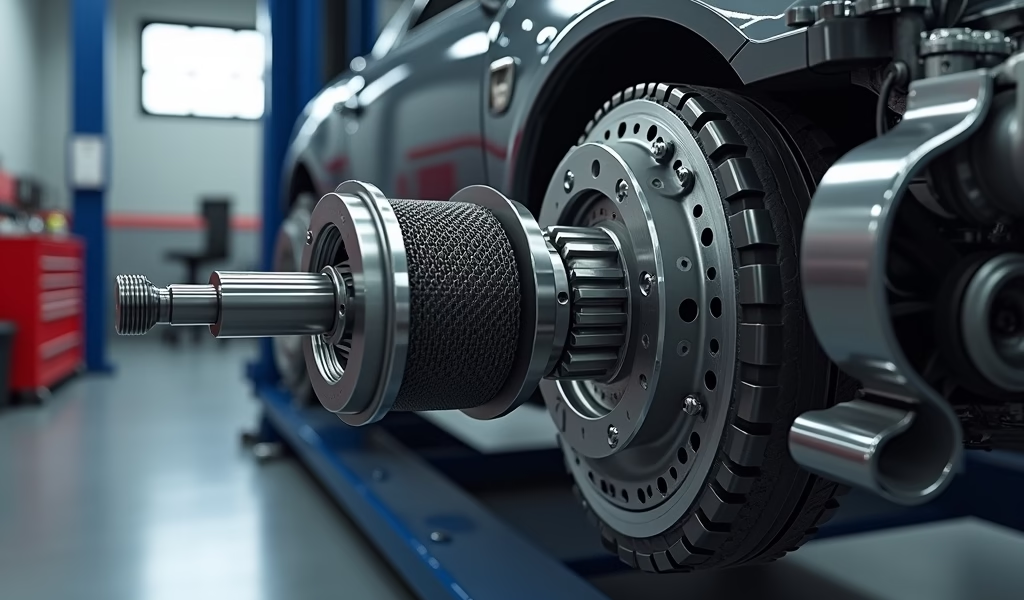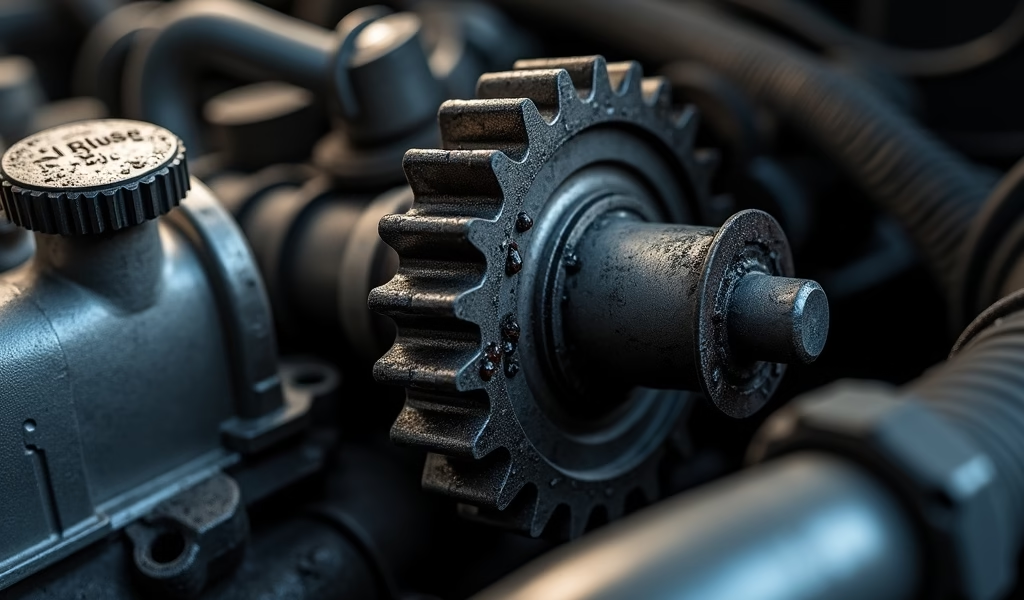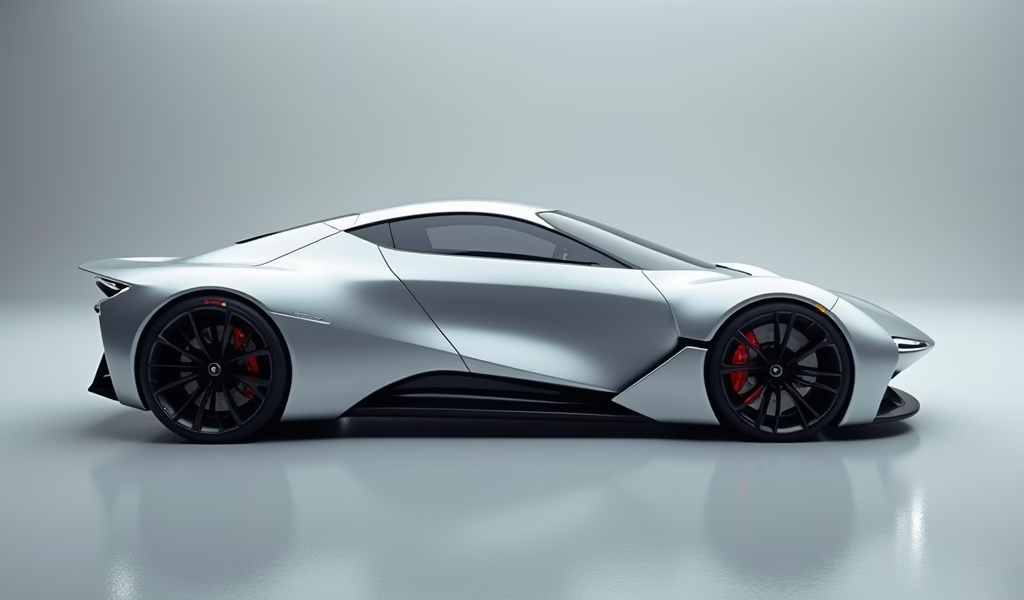Overview
This article explains that oil pump drive gear backlash—the gap between meshing gear teeth—is critical for engine health, with proper measurements typically ranging from 0.002″ to 0.006″. It provides seven detailed solutions for fixing backlash issues, including proper measurement techniques, replacing worn gears, precise positioning adjustments, ensuring proper alignment, upgrading to better materials, using professional assembly methods, and implementing preventative maintenance strategies.
Table of Contents
- Understanding Oil Pump Drive Gear Backlash
- Symptoms of Improper Backlash
- Fix #1: Master Proper Measurement Techniques
- Fix #2: Replace Worn Gears
- Fix #3: Adjust Gear Position with Precision
- Fix #4: Ensure Perfect Oil Pump Alignment
- Fix #5: Upgrade to Superior Gear Materials
- Fix #6: Apply Professional Assembly Techniques
- Fix #7: Implement Preventative Maintenance Strategies
- Conclusion
- Frequently Asked Questions
Your engine’s health hinges on proper lubrication, and the unsung hero making it happen is the oil pump drive gear. When this crucial component develops improper backlash, it’s like your engine has developed a cardiac arrhythmia – everything else might look fine, but trouble’s brewing under the surface.
I’ve been elbow-deep in engines for over 20 years, and I can tell you that oil pump drive gear backlash issues are like silent assassins – they do their damage quietly until one day, your engine decides to throw in the towel. The good news? With the right knowledge and approach, you can identify and fix these problems before they empty your wallet.
Understanding Oil Pump Drive Gear Backlash
Let’s break down what backlash actually is in mechanic-speak: it’s simply the gap or play between meshing gear teeth. Think of it like the space between your hands when you clap – too much space and you’ll barely make contact; too little and your hands will painfully smack together.
In your engine, the oil pump drive gear typically connects to either the crankshaft or timing chain. Its job description is straightforward but critical: transfer rotational force to the oil pump, which then pressurizes and circulates the lifeblood of your engine.
Most manufacturers specify backlash measurements between 0.002″ and 0.006″ (about the thickness of a piece of paper). This tiny clearance is the sweet spot – the Goldilocks zone where your gears can operate without excessive friction or slop.
When backlash is too tight, gears bind and wear prematurely. When it’s too loose, you get the mechanical equivalent of teeth chattering – what we call “gear slap.” This creates inconsistent oil pressure, which is as dangerous to your engine as irregular blood pressure is to your heart.
Symptoms of Improper Backlash
How can you tell if your oil pump drive gear backlash is off? Your engine will usually send some distress signals:
- A distinct ticking or rattling noise coming from the timing cover area, especially during cold starts
- Fluctuating oil pressure gauge readings – the needle dancing when it should be steady
- Oil pressure warning light that flickers or illuminates at idle
- Metal particles in your oil – evidence that something’s wearing abnormally
- Reduced engine performance, particularly at higher RPMs
I once had a customer ignore a slight tick from his Ford F-150 for months. “It’s just a normal engine noise,” he insisted. When he finally brought it in, we discovered the oil pump drive gear had worn to half its original thickness due to excessive backlash. The repair cost him four times what early intervention would have.

Fix #1: Master Proper Measurement Techniques
The foundation of fixing backlash issues is accurate measurement. You wouldn’t eyeball the medicine dosage for a sick child, and you shouldn’t guess at backlash either.
Here’s what you’ll need in your toolkit:
- A quality dial indicator with magnetic base (budget at least $50 for a decent one)
- A set of feeler gauges
- The factory service manual for your specific vehicle
The measurement process follows these steps:
- Remove the timing cover to access the oil pump drive gear
- Clean the area thoroughly – old oil and debris can skew your readings
- Mount your dial indicator so the plunger contacts a gear tooth perpendicularly
- Hold one gear stationary (usually the driving gear)
- Gently rock the driven gear back and forth and note the total movement
For most passenger vehicles, aim for 0.003″ to 0.005″ of backlash. Performance engines often specify tighter tolerances (0.002″-0.004″), while heavy-duty diesels might allow slightly more play to accommodate thermal expansion.
Take multiple measurements at different points around the gear circumference – backlash can vary, and you want to find both the minimum and maximum values. The difference between these readings tells you about gear concentricity, which is another potential issue.
Fix #2: Replace Worn Gears
Like your favorite work boots that eventually wear through, gears have a finite lifespan. When inspecting your oil pump drive gear, look for these telltale signs of wear:
- Rounded or chipped gear teeth that have lost their square profile
- Visible scoring, galling, or groove patterns on tooth faces
- Blued areas indicating localized overheating from friction
- Pitting or corrosion that disrupts the tooth surface
When it comes to replacement parts, this is absolutely not the place to pinch pennies. I’ve seen countless engines ruined by budget gears that failed prematurely. The price difference between economy and quality gears is typically $20-40, but the labor cost to replace them again is often $500-1000.
During installation, follow these critical steps:
- Clean all mating surfaces until they shine like a new penny
- Apply a light coating of assembly lube or synthetic gear oil to gear teeth
- Verify timing marks are perfectly aligned before final installation
- Follow manufacturer torque sequences like your engine’s life depends on it – because it does
Remember that gear replacement offers an opportunity to address the backlash in related components as part of a comprehensive approach to drivetrain maintenance.
Fix #3: Adjust Gear Position with Precision
Sometimes backlash issues stem not from wear but from improper positioning. Many engines allow for adjustment using one of several methods:
- Selective thickness shims placed between the gear and its mounting surface
- Eccentric bushings that allow rotational adjustment of gear position
- Slightly elongated mounting holes that permit small positioning changes
When making these adjustments, channel your inner watchmaker rather than your inner blacksmith:
- Make small, incremental changes – usually 0.001″ at a time
- Re-measure backlash after each adjustment
- Work methodically toward the middle of the specified range
- Document each measurement in a notebook for reference
A common mistake is assuming that minimum backlash equals best performance. In reality, the middle of the specified range often provides the best balance between preventing gear bind under thermal expansion and avoiding excessive movement.
I once worked on a Chevy small-block where the previous mechanic had set the backlash to the absolute minimum. The engine ran beautifully when cold but developed a terrible knock once at operating temperature as the gears expanded and began to bind.
Fix #4: Ensure Perfect Oil Pump Alignment
Your oil pump and its drive gear should work together like dance partners at a professional competition. Even perfect backlash can’t compensate for misalignment issues.
Check these critical alignment factors:
- Oil pump housing alignment with its mounting surface on the block
- Shaft runout (wobble) using a dial indicator while rotating
- Housing wear that might allow the pump to shift under pressure
Misalignment typically stems from these sources:
- Worn mounting bosses on the engine block from previous overtightening
- Distorted pump housing from impact damage or improper installation
- Block machining variations from previous repairs
- Debris trapped between mating surfaces during assembly
Precision matters tremendously here – even 0.001″ of misalignment multiplies forces at operating speeds, potentially leading to catastrophic failure. Think of it like a wheel balance issue – barely noticeable at low speeds but violent at highway speeds.
For stubborn alignment issues, consider having mounting surfaces professionally machined at a reputable machine shop. The cost of proper machining (usually $75-150) pales compared to replacing an entire engine.

Fix #5: Upgrade to Superior Gear Materials
Factory gears are designed for average use, but if you’ve experienced repeated failures or run your vehicle harder than most, material upgrades make sense. It’s like switching from all-season tires to specialized performance rubber.
Consider these upgrade options:
- Hardened steel alloys (typically 8620 or 4340 steel) with improved wear resistance
- Billet steel gears machined from solid stock rather than cast or sintered
- Gears with specialized coatings like nitriding or diamond-like carbon for reduced friction
These upgrades typically cost 30-100% more than OEM parts but can provide 2-3 times the service life under demanding conditions. For high-performance applications or work vehicles, this math makes perfect sense.
I’ve installed upgraded billet gears in dozens of fleet vehicles that operate in severe conditions, and the reduction in maintenance downtime has more than paid for the premium parts. One construction company calculated savings of over $4,000 per truck in reduced downtime over three years.
When selecting upgraded components, consult with specialists in your specific engine platform rather than generic parts suppliers. Companies that focus on performance modifications for your engine type will have real-world data on what works, not just catalog claims.
Fix #6: Apply Professional Assembly Techniques
Even perfect parts can fail if installed improperly. Professional assembly techniques make the difference between a repair that lasts 50,000 miles and one that lasts 150,000.
Follow these shop-proven best practices:
- Use a calibrated torque wrench for all fasteners – “feels tight” isn’t a measurement
- Apply appropriate thread lockers (usually blue, medium-strength for pump mounting bolts)
- Verify gear mesh by applying machinist’s blue to teeth, then rotate to check contact pattern
- Apply appropriate sealants sparingly – excess sealant can break loose and clog oil passages
A critical but often overlooked step is verifying free rotation after assembly. With everything torqued down, the crankshaft should turn smoothly by hand. Any binding or rough spots demand investigation before firing up the engine.
Remember that fastener torque creates precise clamping force. Overtightening is just as dangerous as undertightening – it can distort components, stretch bolts, and create stress points that lead to failure. Always use a quality torque wrench and follow manufacturer specifications to the letter.
The principles of backlash adjustment apply across many drivetrain components, from oil pumps to differentials, making this a valuable skill for any serious mechanic.
Fix #7: Implement Preventative Maintenance Strategies
As with most mechanical issues, prevention trumps cure when it comes to oil pump drive gear backlash. Implement these preventative strategies to catch problems early:
- Establish regular inspection intervals – typically during timing belt/chain service
- Maintain oil quality religiously, as contaminated oil accelerates wear
- Consider regular oil analysis testing to detect metal particles before damage occurs
- Listen for unusual noises during cold starts, when wear is most likely to create audible symptoms
Early detection of increasing backlash allows for planned maintenance rather than emergency repair. The difference between these scenarios isn’t just financial – it’s the difference between a controlled repair on your schedule versus being stranded on the side of the road.
I recommend keeping a simple maintenance log with dates and measurements if you’re mechanically inclined. For those less comfortable with DIY work, ask your trusted mechanic to check and document oil pump drive gear backlash during regular major services.
Oil quality deserves special emphasis – modern engines run hotter and under higher pressures than ever before. Using the manufacturer-recommended oil grade and changing it at specified intervals is the single most effective preventative measure for extending gear life.
Conclusion
Proper oil pump drive gear backlash isn’t just a mechanical specification – it’s essential insurance for your engine’s longevity. Like a well-conducted orchestra, your engine performs best when all components work in perfect harmony, with each part playing its role with precision and appropriate timing.
While some of these fixes require specialized tools and experience, understanding the importance of backlash gives you valuable knowledge when discussing repairs with your mechanic. You don’t need to perform the repairs yourself to benefit from knowing what needs to be done.
For complex engines or if you’re uncertain about your mechanical abilities, seeking professional assistance can save you from costly mistakes. However, armed with the knowledge from this guide, you’ll be in a much stronger position to ensure the work is done correctly.
Remember that addressing backlash issues properly delivers benefits beyond immediate repair – it’s an investment in your vehicle’s future reliability and performance. By maintaining proper oil pump drive gear backlash, you’re ensuring that the conductor of your engine’s lubrication symphony keeps perfect time for thousands of miles to come.
Frequently Asked Questions
What causes excessive oil pump drive gear backlash?
Excessive backlash typically results from gear wear, improper installation, or manufacturing defects. Continued operation with insufficient lubrication accelerates this wear process.
How often should oil pump drive gear backlash be checked?
Check backlash during timing chain/belt replacements or every 60,000-100,000 miles for preventative maintenance. Vehicles used in severe conditions should be inspected more frequently.
Can I drive with improper oil pump drive gear backlash?
Driving with improper backlash is extremely risky and can lead to sudden engine failure. Even minor backlash issues should be addressed promptly to prevent catastrophic damage.
What’s the average cost to fix oil pump drive gear backlash?
Repair costs typically range from $400-$1,200 depending on vehicle make and labor rates. The parts themselves are relatively inexpensive, but access often requires significant disassembly.
Will synthetic oil help protect against backlash issues?
Synthetic oil provides better protection against wear, especially during cold starts when most gear damage occurs. While it won’t fix existing backlash problems, it can help prevent them.

